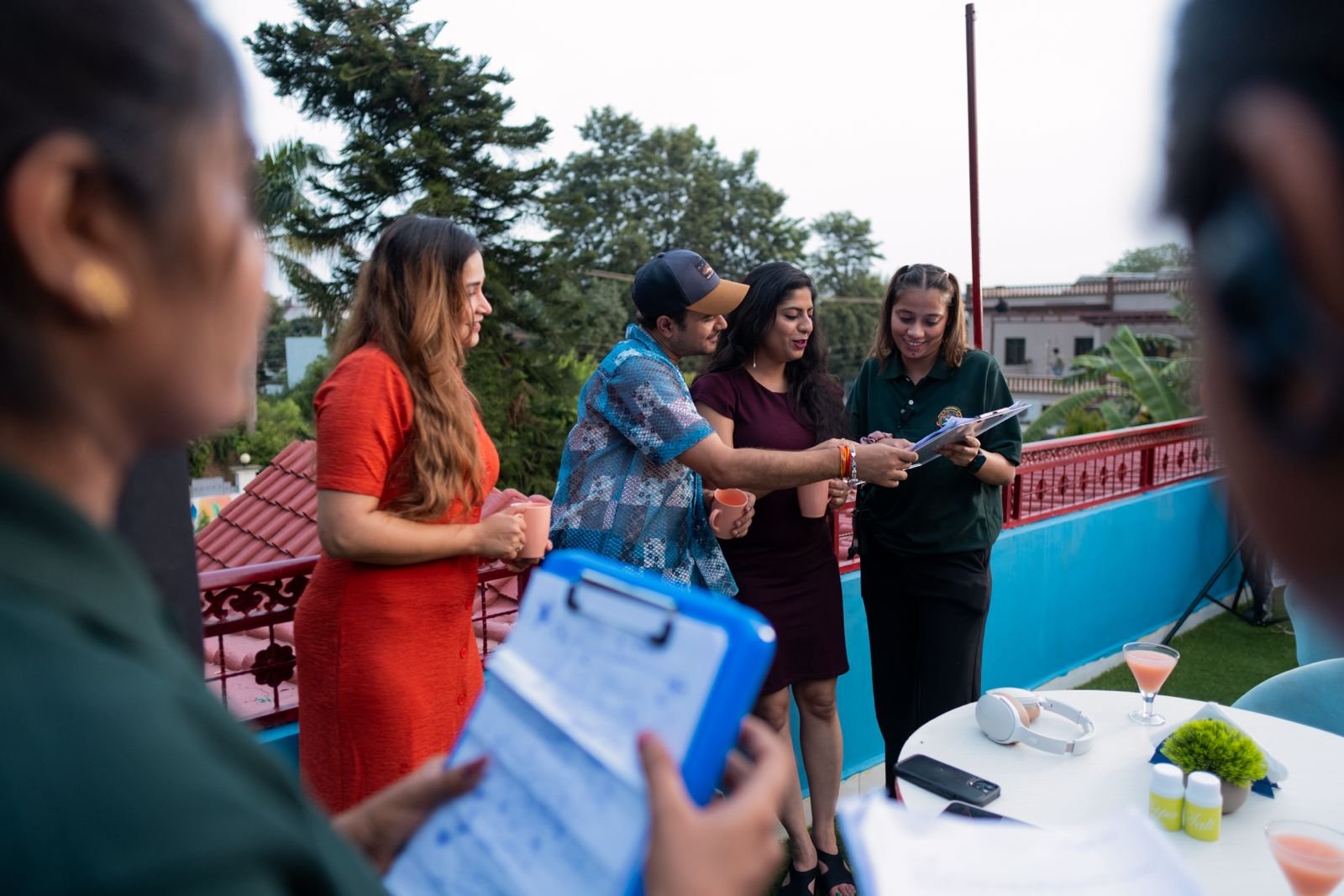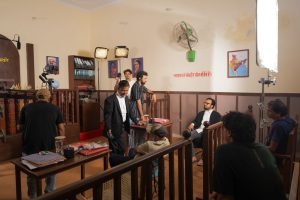Storyboarding is crucial for anyone who wants to be a filmmaker, whether you are working on Bollywood films, Punjabi films, music videos, or indie projects. It is the guide that assists directors, cinematographers, and editors to have a vision of how every scene will look like before shooting. The art of storyboarding can be very useful for aspiring filmmakers, and especially for students studying at the most popular film schools in India like Creators Pathshala. In this blog, we’ll discuss how to plan your film like a pro using storyboarding and why it is such a crucial part of the filmmaking process.
What is Storyboarding?
Storyboarding is a way of mapping out your film in scenes on paper, so that you can see the big picture. Every box in a storyboard corresponds to a shot and contains information about camera view, characters’ placement, and actions. For students that are in film production classes or filmmaking classes, storyboarding is the initial process of turning a script into a movie.
Storyboards help you:
- Imagine how your film will look
- Share your thoughts effectively with your team
- Organize the positions and movements of the camera and the way in which it changes its position.
- Try to anticipate problems before starting the shooting.
Whether you are dealing with Bollywood movies or Punjabi movies, it is important to know how to go about storyboarding in the most effective way possible to avoid unnecessary costs during the shooting process.
Importance of Storyboarding in Bollywood and Punjabi Movies
In the Indian film industry especially Bollywood and the regional films such as Punjabi films, the song and dance sequences and the action sequences are very energetic and therefore it is very important to storyboard. These elaborate sequences can be planned visually to help directors coordinate choreography, set design, and camera movements. This is why films produced by famous directors are always integrated and look very well thought through.
In the best film institutes in India, students learning cinema are taught how to draw scenes for different types of movies including the action packed Bollywood movies and the movies that are driven by emotions. It is a skill that is equally relevant to the film direction course learners as it is to the learners in the screen writing course and the film editing course.
How to storyboard like a professional
- Break Down the Script
The first step in storyboarding is to divide the script into scenes and significant events. Emphasize the key moments in your story and imagine how they will look when they are on the screen. At the same time, for students taking screenwriting courses it is important to know how the scene looks like when it is filmed.
For instance, if you are doing a music video or a Bollywood movie with a lot of dance scenes, each beat of the song may correspond to a different shot or a different view. These transitions and movements should be reflected in the storyboard.
- Create Simple Sketches
Storyboarding isn’t about drawing, so you don’t have to be an artist to do it. This can be done with simple stick figures and basic shapes as long as the information required is passed. Do not worry about getting too detailed with the props, backgrounds, and other aspects of the scene; concentrate on framing, characters’ stances, and the angles of the shots. Students learning cinema are normally advised to focus more on the simplicity of the drawings rather than the artistic work on the story board.
If you are sketching the Punjabi films or the Bollywood films with the action sequences, make sure that your sketches capture the action sequences like stunts or special effects. This assists the whole crew to imagine how these complicated stunts are going to be done.
- Explain what are Camera Angles and Camera Movements.
Camera points of view and movements are among the critical factors to consider when storyboarding. Will the camera move across the scene and focus on a particular character or face or will the camera be static? These decisions determine the rhythm and mood of your movie.
On your storyboard, draw a box around the area where the camera will be and how it will be moved. For instance, while shooting a music video, wide shots may be used to capture the performance of a group while close shots are well suited for capturing emotions. Storyboarding enables the film students to try out these choices before they get to the actual shooting.
- Continuity and flow are key to the design of the architectural space.
Effective storyboarding helps in achieving continuity of scenes from one to the other. This is particularly relevant for movies with complex narratives, for instance, movies produced in Bollywood or Punjabi movies that could have several plots.
Make sure that continuity of your storyboards is observed, especially in terms of the position of characters in relation to the camera and other objects in the scene. To the film editing students, it is crucial to know how different shots relate to each other in order to achieve continuity in the final product.
- Collaborate with Your Crew
It is not just the director’s tool but it is used by everyone in the production process of the show. Cinematographers, editors and even actors are able to comprehend the director’s vision through the use of the storyboard.
This is important for students who are in filmmaking classes. It is beneficial to learn how to convey your vision through storyboards since it makes the production process much easier, and everyone working on the Bollywood films, music videos, or short films will be on the same page.
How Storyboarding is Taught in Film Production Courses
In the best film institutes of India like Creators Pathshala, storyboarding is included in the course structure of film production, filmmaking, and film direction courses. Students are trained to visualize what they want to do on set, including the lighting, the characters’ movements and everything in between, before they get to the set.
In these courses, students are usually expected to develop storyboards for their projects among other things. They learn how to:
- Develop the scenes for the cinema films in India, Bollywood films and other regional films such as Punjabi cinema films
- It is done with real-life constraints such as time, money and other resources available.
- Cultivate the capability of converting scripts into visual maps within the shortest time possible.
- Cooperate with other departments including sound, lighting and post-production to ensure that everyone is on the same page.
Conclusion: The Art of Storytelling for Professional Filmmakers
Storyboarding is one of the most important skills that any filmmaker needs to learn as he or she prepares for the big leap. It assists you to map out your film and even develop scenes that you want in your movie before shooting them. Regardless of whether you are taking a course in filmmaking or direction or even a course in film editing, mastering the art of storyboarding will go a long way in enhancing the quality of your productions while at the same time making you a more productive filmmaker.
At Creators Pathshala, we provide courses in film production and filmmaking to give students the best skills in their endeavors such as storyboarding. Sign up with us today and discover how to schedule your movies like a pro and actualize your movie dreams.



